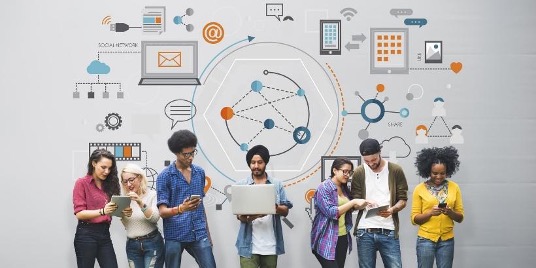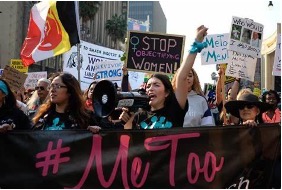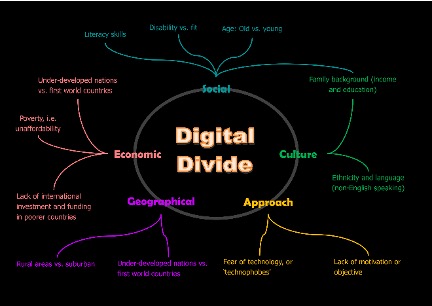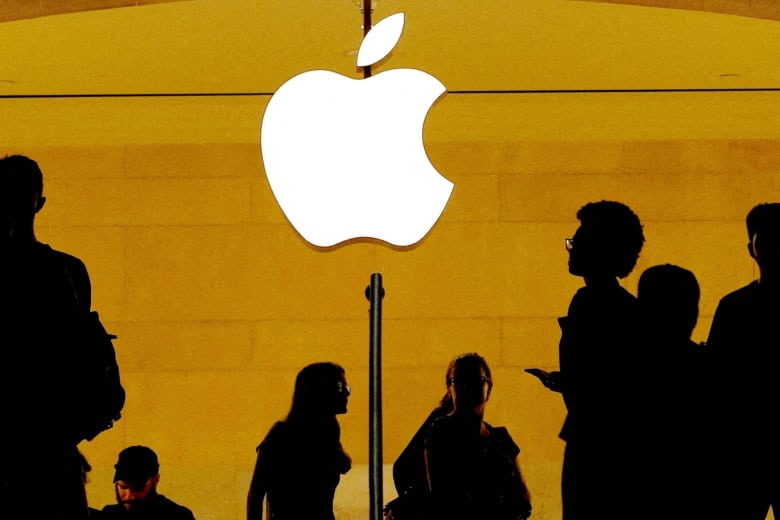The rapid advancements in technology over the past few decades have revolutionized the way society function and interact. The digital age has brought numerous benefits, including enhanced connectivity, access to information, and increased convenience. It has the power to bring people together, transcend geographical boundaries and foster global collaboration. However, it also possesses the capacity to create divisions, deepen inequalities, and fragment communities. This concept has given rise to a phenomenon known as “tech duality” – which encapsulates the simultaneous bridging and dividing of societies in the digital age.
Digital technologies have both a bridging and diving effect on societies. One of the most notable ways technology bridges societies is by enhancing connectivity. The Internet, social media platforms, and instant messaging tools have revolutionized communication, making it easier for individuals across the globe to connect and interact. It has also enabled access to information like never before. Technology has democratized access to information by providing people with unprecedented levels of knowledge, diverse perspectives, and understanding of different cultures and individuals from around the globe.

People can now share ideas, experiences, and cultures with ease, fostering a global community that transcends traditional boundaries. This accessibility of online learning platforms, digital libraries, educational apps, and Massive Open Online Courses (MOOCs) has empowered people from all walks of life, regardless of their socioeconomic background, to acquire new skills and participate in social, economic, and political spheres. E-commerce platforms and online marketplaces provide opportunities for small businesses and entrepreneurs to reach a wider customer base, expanding their market beyond their local boundaries. Digital payment and mobile banking have increased financial inclusion.
Additionally, technology has been instrumental in advancing humanitarian causes and promoting social change. Online platforms have facilitated mass mobilization, allowing individuals to unite under a common cause, raise awareness, and drive meaningful impact. Movements such as #BlackLivesMatter and #MeToo have gained global attention and sparked conversations that have challenged societal norms and institutions.


Despite its bridging potential, technology has also contributed to the division of society. The digital divide is a term that describes the uneven distribution of information and communication technologies (ICTs) in society. The digital divide encompasses differences in both access (first-level digital divide) and usage (second-level digital divide) of computers and the internet between (1) industrialized and developing countries (global divide), (2) various socioeconomic groups within single nation-states (social divide), and (3) different kinds of users about their political engagement on the Internet (democratic divide).
The digital divide remains a significant challenge for those who do not have access and are left out of certain opportunities and conversations held within virtual spaces influenced by modern technologies like social media and video conferencing tools. Not everyone has access to the internet, technology, and digital skills. Technology has enabled slower adoption in communities with low internet penetration rates such as rural areas to continue hindering behind faster adopters i.e., large cities. These people remain cut off from these perks due to increased economic differences between HAVES and HAVE-NOTS. This divide can deepen socioeconomic gaps and hinder progress in education, employment, and civic engagement.

The profile of disinformation and fake news is another significant factor contributing to the division of societies in the digital age. The speed and ease of information dissemination through online platforms have made it challenging to discern from fact to fiction. It exploits the vulnerability by spreading false narratives, manipulating public opinion, and sowing seeds of hate within communities.
To address the challenge posed by Tech Duality and maximize its potential for societal unity, many efforts are needed. Governments, policymakers, and technology companies must prioritize bridging the digital divide by investing in infrastructure and promoting affordable and accessible internet connectivity. Initiatives such as community broadband projects and public-private partnerships can help ensure that marginalized communities are not left behind.
Education plays are crucial role in equipping individuals with the skills necessary to navigate the digital landscape effectively. Digital literacy programs should be started to empower individuals to critically evaluate information, protect their digital identities, and engage responsibly with technology. Additionally, efforts should be made to promote diversity and inclusion in the technology sector itself to ensure that the design and development of digital tools cater to the needs of all users.
Tech Duality embodies the complex relationship between technology and society in the digital age. While it has the potential to bridge gaps, foster connections, and empower marginalized communities, it can also deepen inequalities, fragment societies, and erode trust. By acknowledging the multifaceted nature of tech duality and actively addressing its challenges, we can tackle the positive aspects of technology while mitigating its negative consequences. A collaborative approach is crucial for shaping a future where technology serves as a unifying force, fostering inclusive and equitable societies.
Written by – Anshika Gupta
Edited by – Saba Godiwala




